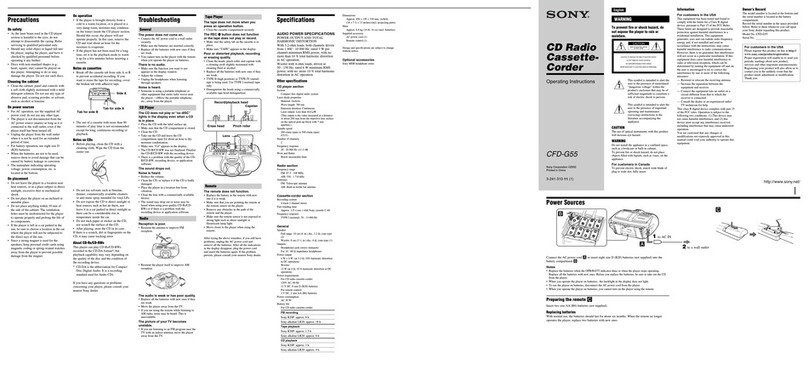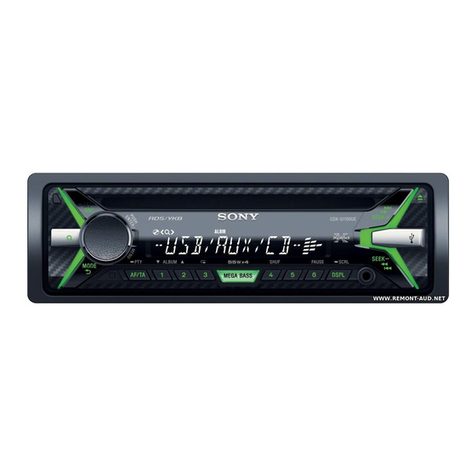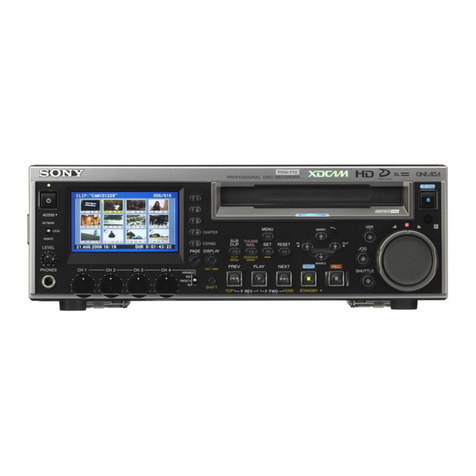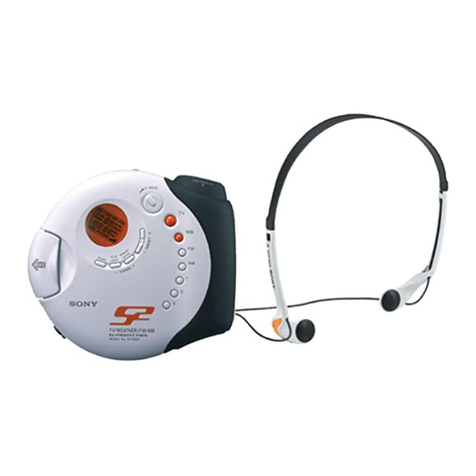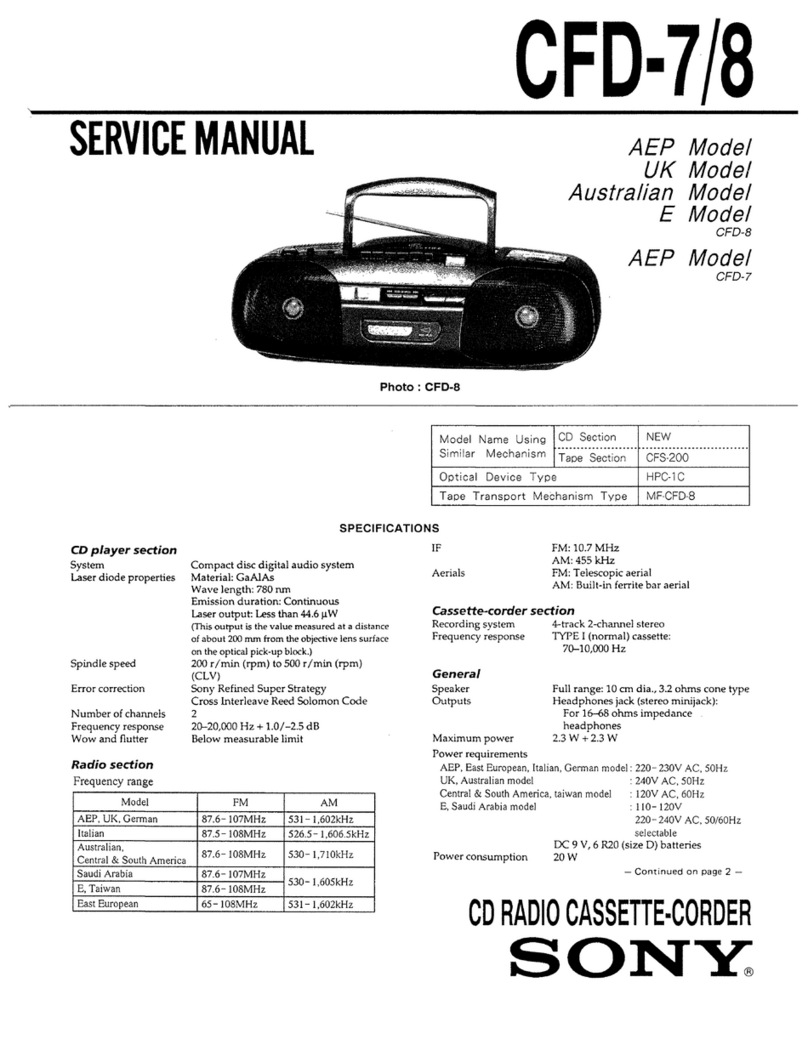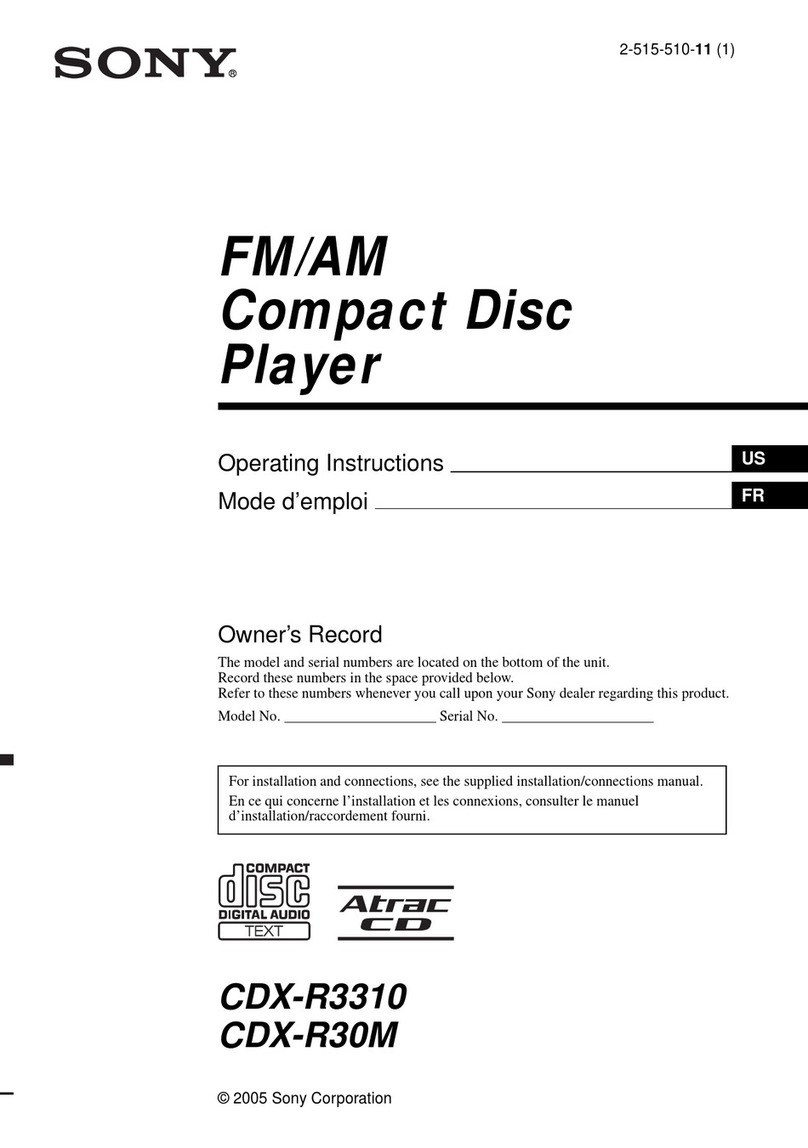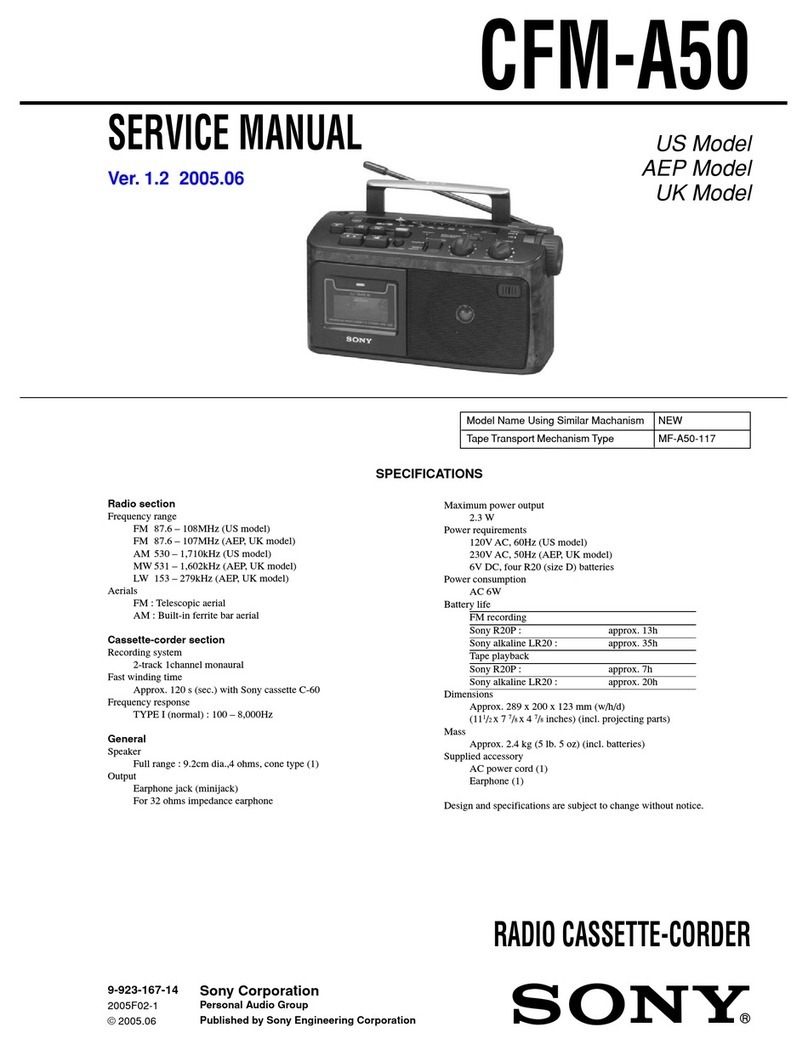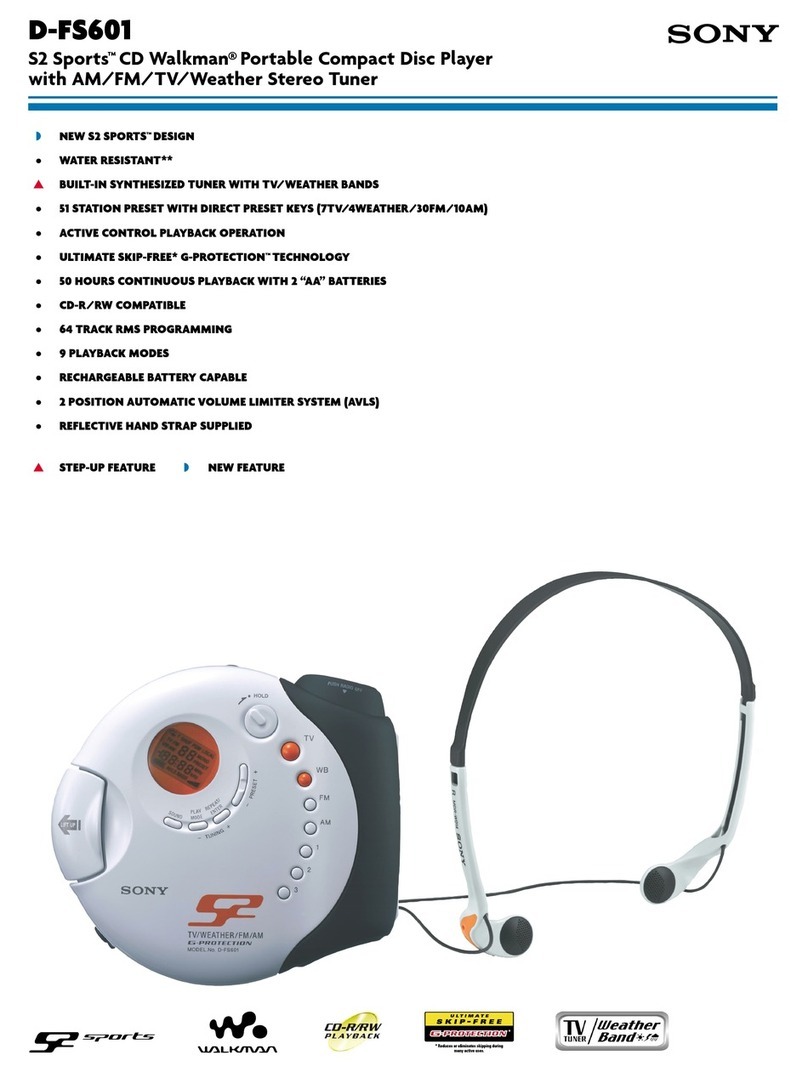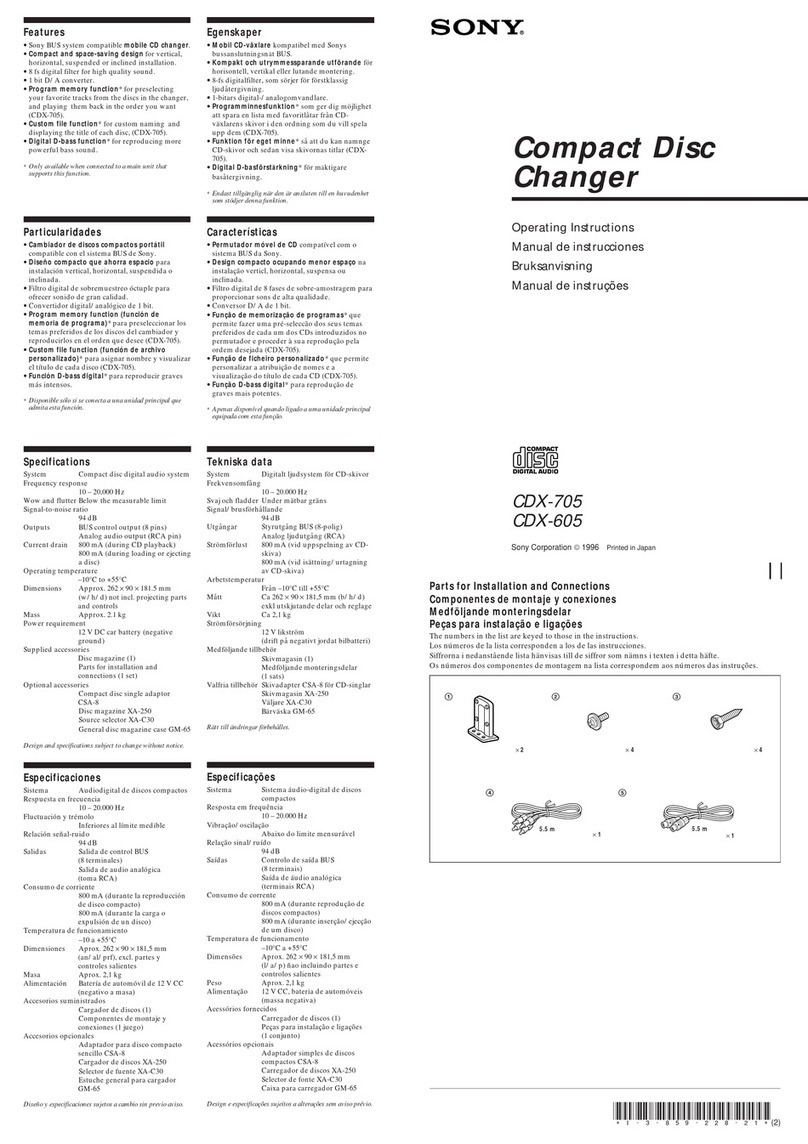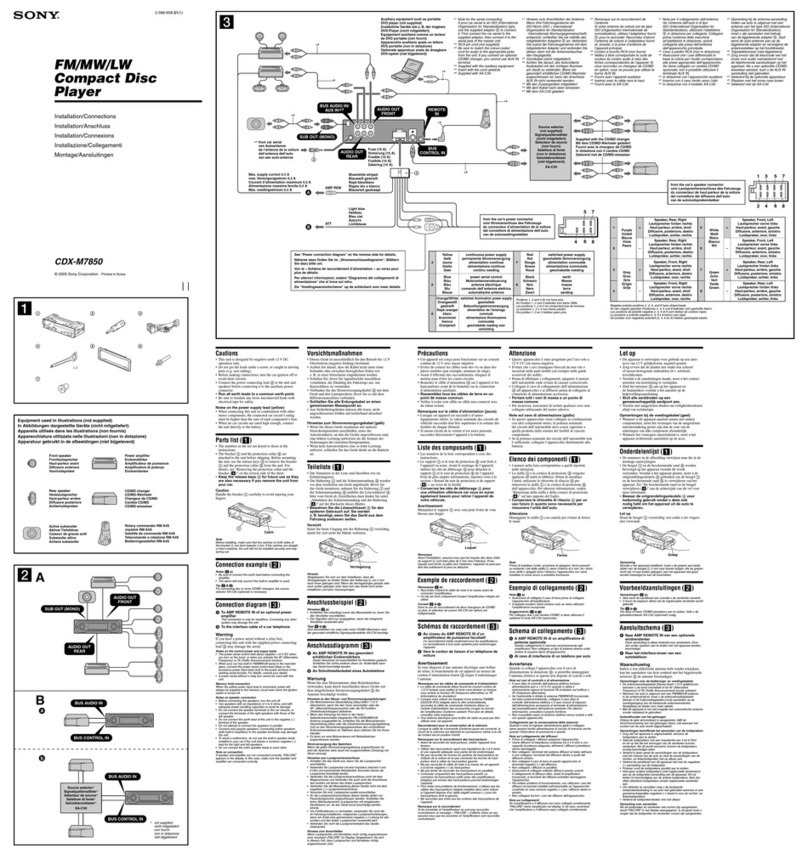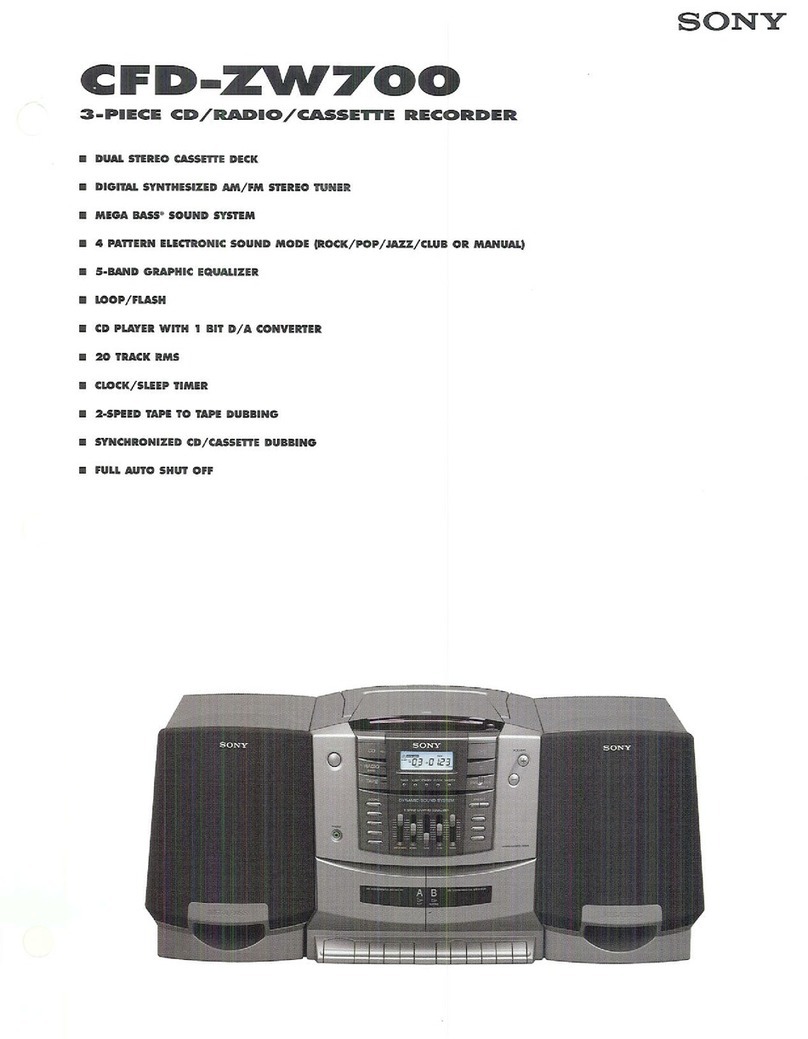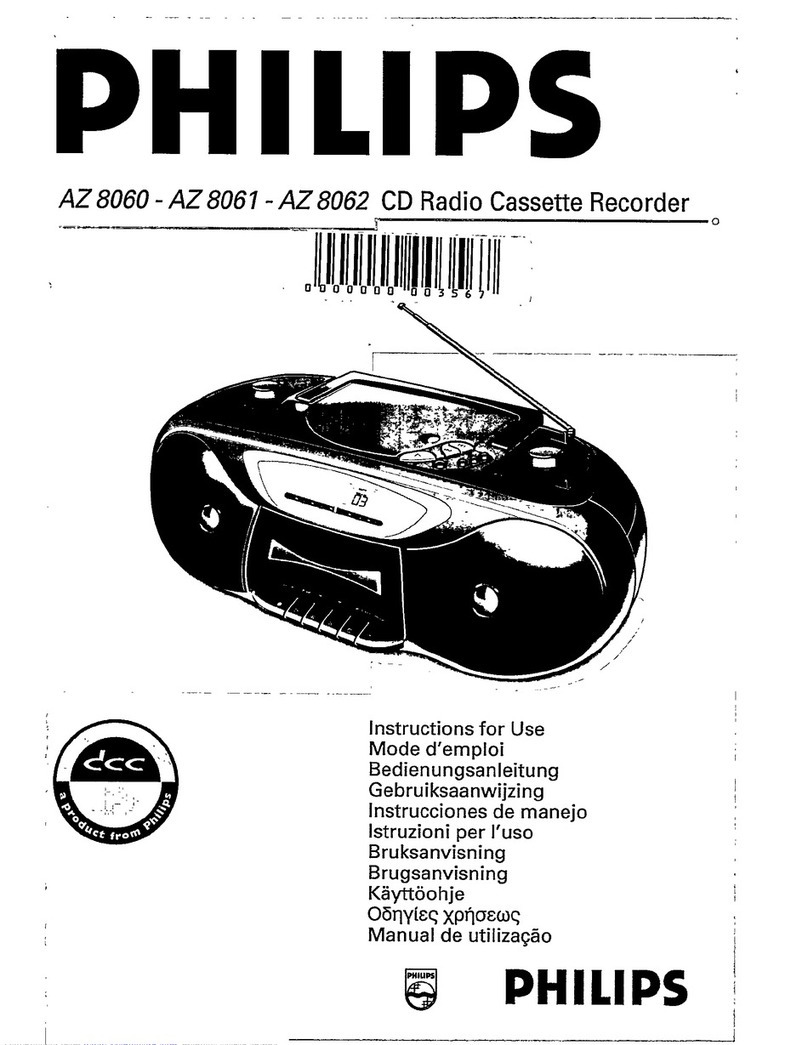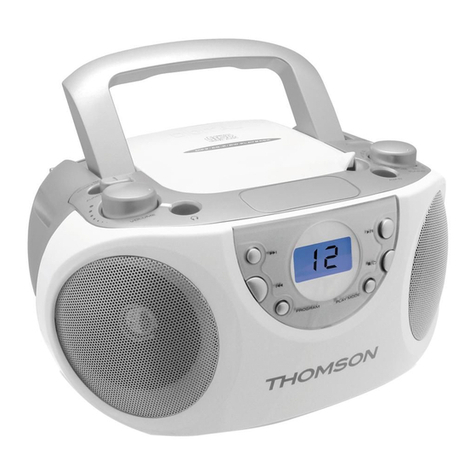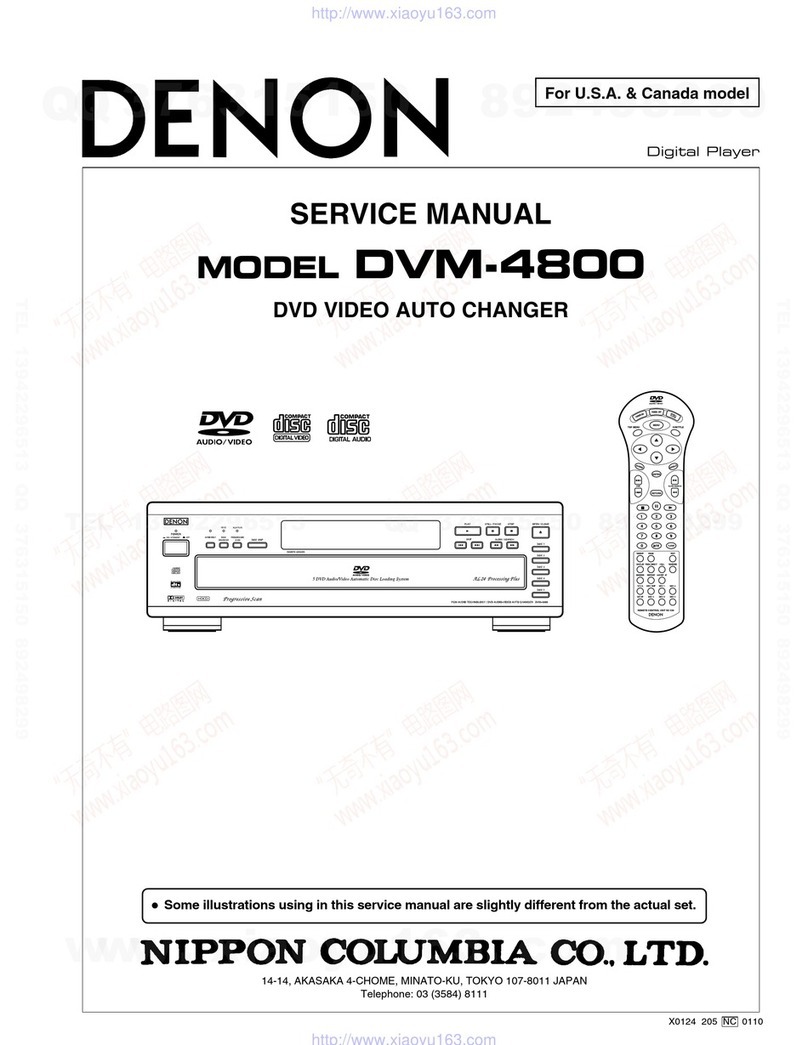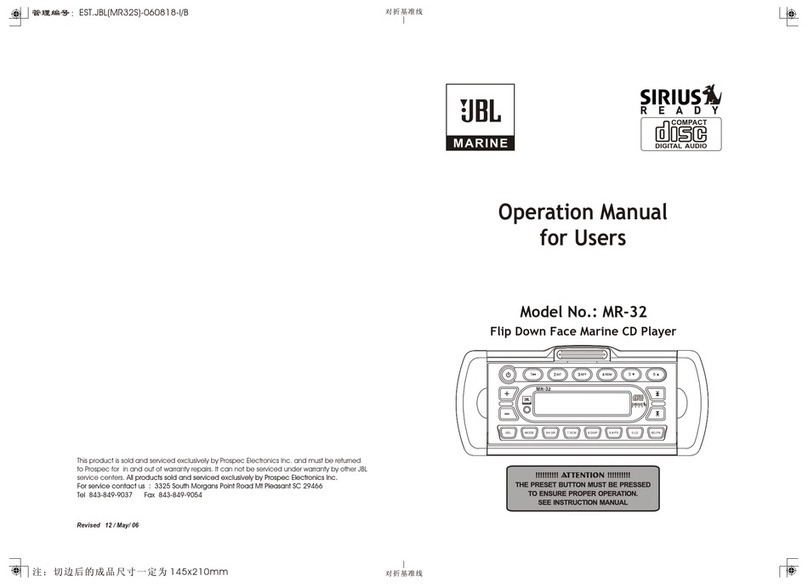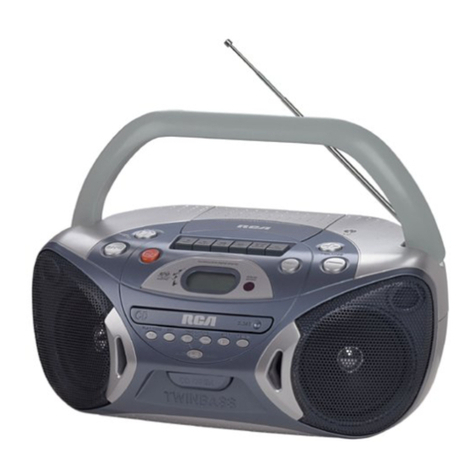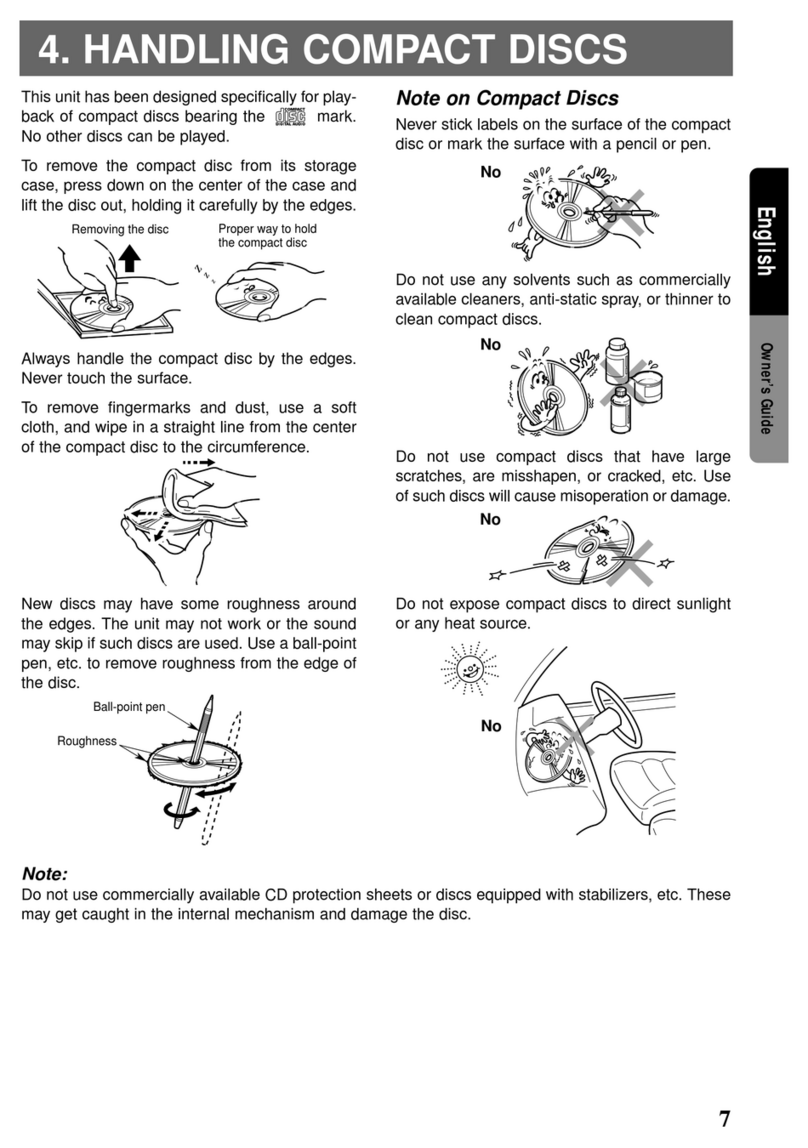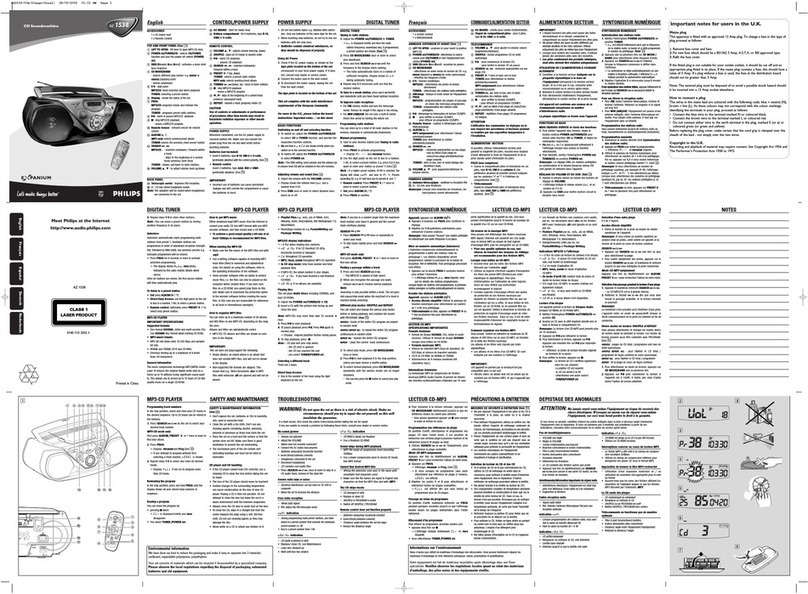
CDP-502ESII/55
2ESDII/620ESII/650ESDII
Disc
Track
pitch
1.6
um
Sampling
frequency
44.1
kHz
Quantization
16
bit
linear
quantizing/channel
Modulation
system
EFM
Transfer
rate
2.03
Mbit/sec.
(before
modulation)
General
Power
requirements
US/Canadian
model:
120
V
AC,
60
Hz
AEP
model:
220
V
ac
(or
240
V
ac
adjustable
by
Sony
personnel),
50/60
Hz
UK
model:
240
V
ac
(or
220
V
ac
adjustable
by
Sony
personnel),
50
Hz
E
model:
110,
120,
220
or
240
V
adjustable,
50/60
Hz
Power
consumption
16W
CDP-502ESII/620ESII:
Approx.
430
x
85
x
335
mm
(w/h/d)
(17
x
33/,
x
131/,
inches)
including
projecting
parts
and
controls
CDP-552ESDII/650ESDO:
Approx.
430
x
85
x
365
mm
(w/h/d)
(17
x
34/5
x
143/,
inches)
including
projecting
parts
and
controls
Weight
CDP-502ESII/620ESI:
Approx.
8.5
kg
(18
Ibs,
12
02),
net
CDP-552ESDII/650ESDI:
Approx.
9.3
kg
(20
Ibs,
8
oz),
net
Dimensions
FEATURES
¢
High
performance
and
high
fidelity.
Direct
digital
signal
output
provides
for
the
highest
possible
sound
quality,
when
this
unit
is
connected
to
an
external
D/A
converter.
(CDP-552ESDII/650ESDII)
*
Feather-touch
function
buttons
for
direct
mode
change.
©
Linear
motor
for
quick
selection
search.
°
A
variety
of
playing
modes:
CONTINUE
mode,
PROGRAM
mode
and
SINGLE
mode.
¢
Index
function
for
quick
location
of
the
part
you
want.
¢
Repeat
function
for
one
selection,
the
whole
disc,
programmed
selections,
selections
with
random
order
or
a
particular
portion.
*
Auto
delay
function
allows
you
to
delay
the
playback
of
the
first
selection
2
seconds.
TABLE
OF
CONTENTS
Section
Title
Page
Specifications:
iio.
de
de
as
Ew
BE
1
B@atures
02.
¢
dish
Roads
Pee
nh
es
SS
2
Model
Identification
................4..
3
Safety
Check-Out
.......0...0.....0.04.
3
Protection
of
Eyes
from
Laser
Beam
During
Servicing...
2...
0.0...
eee
4
Servicing
Note
............
0.000002
eee
5
Caution
for
Electrostatic
Breakdown
........
6
Flow
Chart
of
BU-1C
(Base
Unit)
Troubleshooting...
............0000085
7
Function
of
Controls..............00004
9
Notes
on
Compact
Discs
................
11
SECTION
1
OUTLINE
1-1.
Circuit
Description
................
12
1-2.
Block
Diagram
...................
15
SECTION
2
DISASSEMBLY
.............
17
SECTION
3
ADJUSTMENTS
3-1.
Mechanical
Adjustment
.............
2
3-2.
Electrical
Adjustments..............
2
SECTION
4
DIAGRAMS
4-1.
BU-1C
(Base
Unit)
Section
Mounting
Diagram
................
25
4-2.
CDP-502ESI/620EST
Mounting
Diagram
................
28
4-3.
CDP-502ESH/620ES0
Schematic
Diagram
................
3)
4-4.
CDP-552ESDII/650ESDI
Mounting
Diagram
................
38
4-5.
CDP-552ESDII/650ESDII
Schematic
Diagram
................
43
4-6.
Power
Supply
Section
Mounting
Diagram
and
Schematic
Diagram
.............
4
SECTIONS
EXPLODED
VIEWS
AND
PARTS
LIST
..............
33
SECTION
6
ELECTRICAL
PARTS
LIST....
6!

